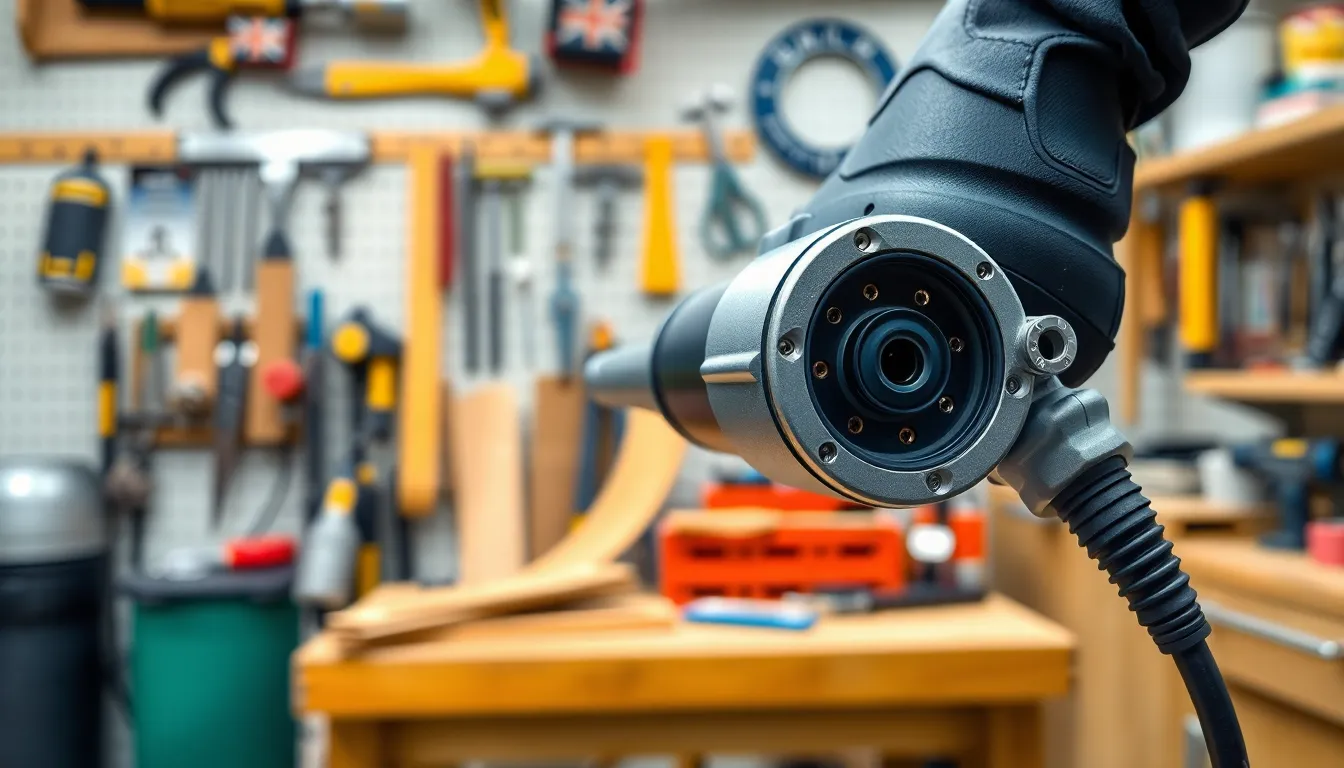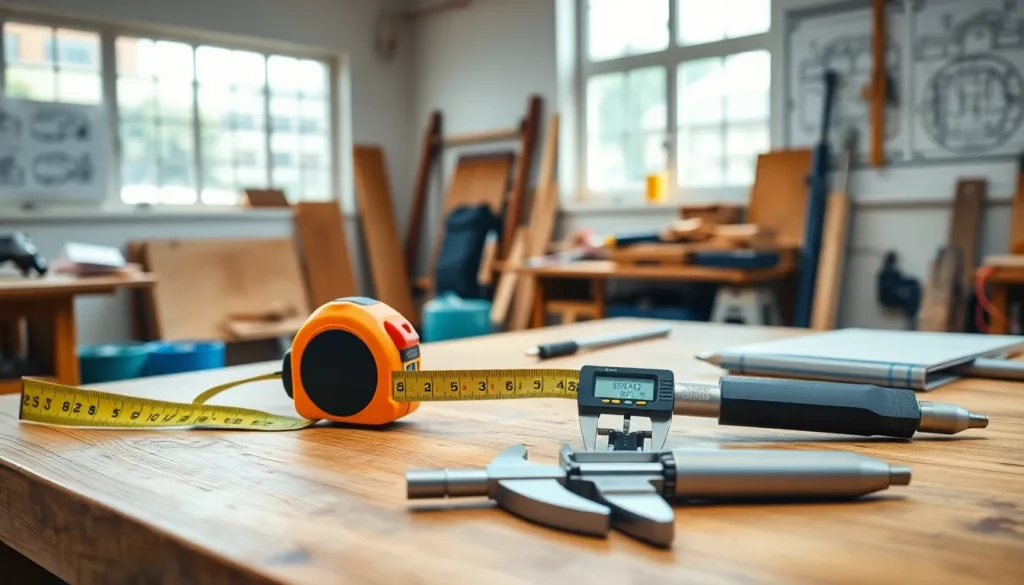In a world where even your coffee maker has a smarter brain than your high school math teacher, it’s time to rethink those dusty old tools cluttering your garage. Tool upgrades aren’t just for the pros; they’re for anyone who wants to transform their DIY disasters into masterpieces. Imagine wielding a power drill so advanced it practically does the work for you.
Table of Contents
ToggleImportance Of Tool Upgrades
Upgrading tools plays a crucial role in enhancing the efficiency of DIY projects. Modern tools incorporate advanced technology that often provides better precision and reliability. Improved power drills, for instance, offer greater torque and battery life, allowing for more extended use without interruptions.
Safety is another factor that benefits from tool upgrades. Newer tools typically include advanced safety features that reduce the risk of accidents. Enhanced ergonomics in tool design also contribute to reduced fatigue during prolonged use.
Increased comfort leads to better control and performance. Workers can maintain focus and productivity when tools function smoothly. Upgrading tools ensures these devices remain effective and meet evolving project demands.
Cost-effectiveness supports the case for tool upgrades. Investing in new tools may reduce the frequency of repairs and failures. Long-lasting equipment minimizes the need for replacements, ultimately saving money in the long run.
Modern features, like digital displays and smart technology, help users achieve impressive results. New tools often include built-in guides or automatic settings, making them more accessible for beginners. With user-friendly innovations, anyone can complete complex tasks with confidence.
Finally, staying updated with innovative tools can enhance the overall quality of work. Projects can be finished with greater accuracy and professional-like finishes, which will impress homeowners and contractors alike. Emphasizing upgrades leads to significant improvements in both project outcomes and personal skills.
Types Of Tool Upgrades

Upgrading tools involves both software and hardware enhancements. Each type contributes uniquely to improving performance and usability.
Software Upgrades
Software upgrades enhance the functionality of tools, particularly in smart technology applications. They improve features through updates, making tools more intuitive for users. For instance, digital displays frequently receive enhancements that allow for clearer feedback during use. Increased connectivity offers wireless features, enabling remote access and monitoring. These upgrades often lead to better performance, optimizing tasks that require precision. Users benefit from enhanced safety features that software updates can provide, ensuring tools operate within safe parameters. Regular updates keep tools compatible with new technologies, ensuring longevity and relevance.
Hardware Upgrades
Hardware upgrades involve replacing or enhancing the physical components of tools. Improved materials often lead to better durability, allowing tools to withstand demanding tasks over extended periods. For example, updated power drill motors typically provide higher torque, enabling users to work with tougher materials. Enhanced battery technology often results in longer usage times without recharging interruptions. Ergonomic designs in newer tools significantly increase comfort and reduce fatigue during use. Upgrading blades or bits can lead to better cutting efficiency, making projects easier and faster. Overall, hardware upgrades directly impact the effectiveness and reliability of tools.
Benefits Of Tool Upgrades
Tool upgrades provide significant advantages for DIY enthusiasts and professionals alike. Improved functionality, safety, and overall project outcomes stem from modernizing tools and incorporating new technologies.
Improved Efficiency
Upgrading tools leads to enhanced efficiency during projects. Modern tools boast features that streamline tasks and reduce manual effort. For instance, advanced power drills offer faster drilling speeds and improved battery life, allowing users to complete jobs more quickly. Greater torque translates into the ability to drive screws and holes with less physical strain, saving time and energy. Additionally, features like quick-change chuck systems enable faster bit replacement, decreasing downtime. Increased automation in some tool types also minimizes repetitive tasks, providing more time for creative aspects of projects.
Enhanced Performance
Performance improves significantly with tool upgrades, allowing for better quality work. Newer tools often incorporate technology that ensures accuracy and precision. For example, laser-guided cutting tools provide exact measurements that reduce mistakes. Ergonomically designed handles increase comfort, enabling extended usage without fatigue. Many upgraded models feature adjustable settings, allowing users to customize performance according to specific materials or tasks. Furthermore, modern tools commonly come equipped with enhanced safety features, increasing user confidence while working with potentially hazardous equipment. Enhanced performance ultimately leads to a higher standard of finished work, meeting professional-like expectations in DIY projects.
Considerations Before Upgrading Tools
Upgrading tools involves careful consideration of several important factors. Evaluating these elements ensures that the investment yields the desired benefits.
Budget Constraints
Budget limitations play a critical role in deciding which tools to upgrade. Prioritizing essential purchases over non-essential ones maximizes financial resources. It’s advisable to create a clear budget that defines the maximum spending limit. Understanding costs associated with both new tools and potential maintenance helps in making informed choices. Sticking to the budget prevents overspending and encourages strategic planning. Taking advantage of sales or promotions can also stretch the available budget further. Establishing a timeline for upgrades allows for better financial management, ensuring tools can be purchased at the right time.
Compatibility Issues
Compatibility considerations are crucial in the decision to upgrade tools. Ensuring new tools work with existing equipment prevents disruptions in workflows. Checking specifications and manufacturer recommendations can highlight potential compatibility concerns. Investing in tools that seamlessly integrate into the current toolkit enhances overall efficiency. Additionally, evaluating software compatibility, especially for smart tools, ensures all functionalities operate smoothly. Upgrading hardware without accounting for compatibility may lead to wasted resources and frustration. Assessing compatibility before purchasing guarantees that upgrades align with project requirements and enhance productivity.
Upgrading tools is more than just a trend; it’s a strategic move that elevates the quality and efficiency of any DIY project. With modern advancements in technology and design, individuals can achieve professional results while enjoying enhanced safety and comfort.
Investing in new tools not only improves performance but also reduces long-term costs associated with repairs and maintenance. By carefully evaluating needs and budget, anyone can make informed decisions that lead to successful outcomes. Embracing tool upgrades ultimately empowers users to tackle projects with confidence, ensuring they can create impressive results that reflect their skills and dedication.










